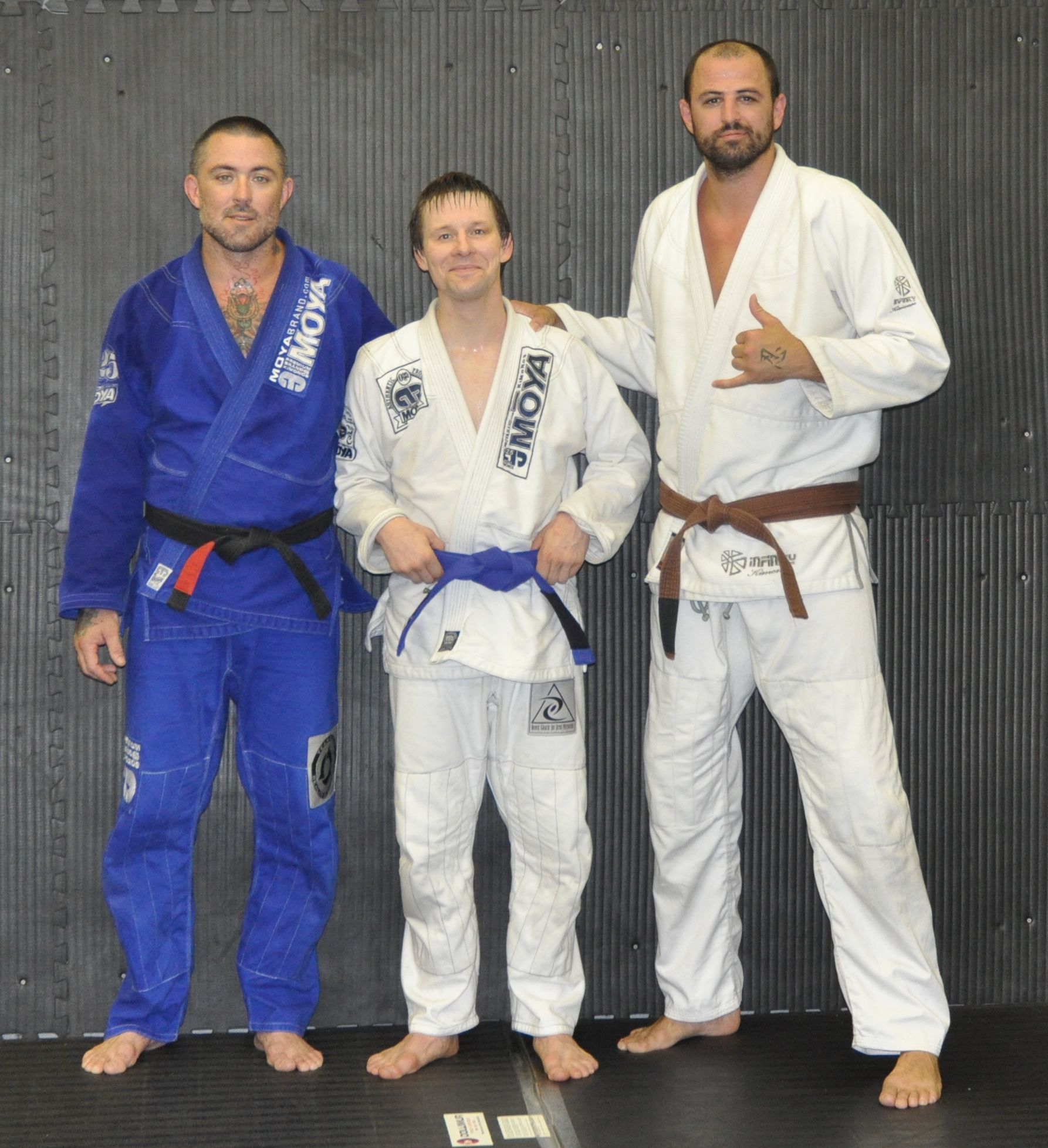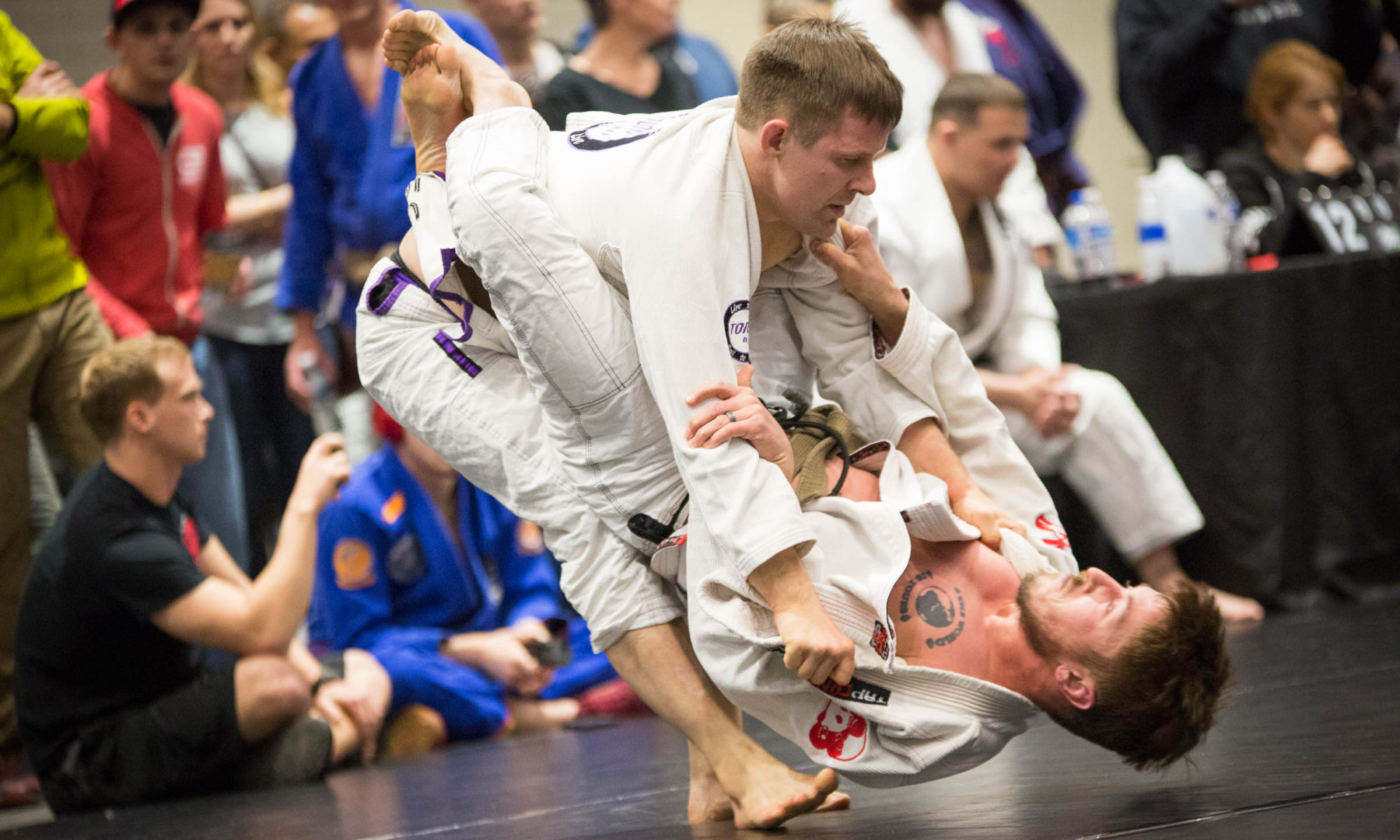My basic butterfly sweep has never worked.
I mean that literally. The most basic of butterfly guard sweeps, and I’ve never been able to pull it off against anyone save a brand-new white belt with no sense of what “base” means. This despite the fact that I, by virtue of my small size as well as personal preference, spend a lot of time working on my guard.
Now, if you know me — or if you read this blog — you know that I am obsessive about getting better at jiu-jitsu. I train a lot, drill, take privates, go to seminars, watch videos, read books, you name it. Yet this most basic jiu-jitsu technique eluded me at every turn. For more than three years.
Until last night. My instructor — a black belt under Royce Gracie — was watching me drill it, and immediately noticed two small but vital mistakes I was making. The sweep works now. It took him probably two minutes of instruction.
You might have heard that Royce Gracie, head of my association, recently criticized the online training program Gracie University. For me, the butterfly sweep incident clarified in my mind one of the reasons why online training, absent qualified in-person instruction, is nonsensical.

I feel deeply fortunate to be living in a time when we have access to all these training resources that the people who came before me didn’t have. My teachers came up in a time when having a black (or even a brown) belt around was extremely rare. What videos they could get were expensive, infrequent and took a long time to ship. Failing to take advantage of these training supplements would be silly.
That’s what they are, though: supplements, not substitutes. The way I was doing (well, failing at) the butterfly sweep for the past few years looked exactly like it did in the books and videos. It was enormously frustrating that I couldn’t get it to work during live sparring, even after a ton of drilling.
This doesn’t have to be a butterfly sweep, of course. It could be any basic technique. If you’re just repeating what you see in videos, it is nigh impossible to correct errors. You might spend, oh, a few years doing something incorrectly. Without someone experienced to ask questions, you could waste valuable time . Worse, without meaningful live sparring, you might not even really know you’re making move-killing mistakes.
Or you could train with a legitimate instructor who can fix your problem in minutes.
This seems like an easy decision to me. Bear in mind also: I am a jiu-jitsu-obsessed, guard-playing, Internet dweller who watches technique videos the way some people breathe air. I of all people should be able to recognize the value of online training.
And I do recognize its value. I’ve seen the Gracie University videos: they’re excellent. For people who want to learn more about jiu-jitsu, I think they’re great.

A few problems, though. First, there is a different between abstract knowledge (how a move works in principle) and applied knowledge (how to make a move work against a live opponent). Also, so much of a technique must be felt instead of simply seen. Where should my pressure go? What does correct posture in this position feel like? How high or low should I be? Rener and Ryron are terrific teachers. But they aren’t going to come over and diagnose your trouble with the butterfly sweep, or upa escape, or collar choke.
Besides, even the most basic sweep has so many details and moving parts that no video, no matter how long or comprehensive, can cover it in totality — while an instructor can see what you, the individual practitioner, need the most help with. The training you will get at a legitimate academy is qualitatively better than even the best online-only training site. This is a point that I don’t even really consider debatable.
Second, there is the fact that Gracie University is doing belt promotions. Personally, I try not to think about rank. Training should be an end in itself: you do it because you enjoy it, and you want to learn the art. But in an art like jiu-jitsu, where belts are earned through a ton of hard work and no small amount of pain, it’s easy to see why someone getting a blue belt through the mail after sending in video rubs many the wrong way.
Online training, I think most would agree, is a fine addition to your academy. Getting a promotion from someone who hasn’t ever rolled with you — whose hand you have never shaken — is a different matter.

The only argument for online-only training, from my perspective, is the absence of any other option. You can make a case that, for people in remote areas, training in this manner would be better than nothing. Honestly, I think this is far from a certain truth, but I can see the argument.
That’s not what’s happening, though. Students who received a blue belt through Gracie University are opening their own schools now — schools in areas with qualified black belt instructors nearby. This strikes me as unjustifiable, and frankly inexcusably disrespectful to people who have spent a decade or more earning a black belt.
I can think of lots of blue belts under Royce Gracie off the top of my head that are better than I am. Then, I think of their instructors, and how much more jiu-jitsu knowledge they have than the blue belts that beat me. Every single one of those blue belts I expect has more jiu-jitsu knowledge than the overwhelming majority (and perhaps all) of online-certified instructors. None of those blue belts, myself included, would dream of opening a school at this point.
Jiu-jitsu, it’s often said, is a journey. All long journeys worth taking contain errors, losses, setbacks. To successfully navigate journeys of this nature requires both commitment and humility.
Sometimes that means admitting that you’ve been doing a basic sweep wrong for three-plus years. Sometimes it means acknowledging that taking the easy way at first is only making the eventual trip longer — or undermining the purpose of the journey in the first place.
